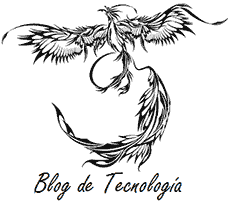Image optimization is one of the most important factor for any website yet it is often overlooked by webmasters. Most of us don’t realize the amount of traffic these images (high quality) could bring to our sites. If the word of Google is anything to go by then images account for 65% of total internet traffic.
Optimizing images contributes a large part to On-Page optimization as they could provide a broader impression on the user. If you are running a blog then sometimes a focused high quality image could drive more traffic than your article. Every webmaster must optimize images on his site as most of the search engines could not see them while crawling as they appear as blank spaces to them.
Peter Linsley of Google have shared in the past the process of how images are ranked as per Google :
- Firstly the crawler finds images from the webpages across the world wide web.
- Then they are classified on various factors like color, quality or whether it is safe for work or not and then indexed.
- The next process they go through is identifying the duplicates and sorting the most authoritative one.
- Then a rank is given based on undisclosed factors just like the text based websites.
He also goes on to say that users prefer high resolution, in-focus images as compared to low quality one’s. Distracting features such as loud water-marks and huge on-image texts are a complete NO as they make the image look cluttered.
According to him some best practices that a webmaster should follow while attaching images to his webpage are :
- Try to add a image which is user-focused rather than search engine-focused.
- Images should be high quality and large enough for the user to interpret it correctly.
- Always try to put it higher on the page and above the fold if possible.
- Adding descriptive text for the images could help search engine immensely to categorize them correctly.
Now that you know how much emphasis a single image could bring to your blog you must be thinking what are the factors that you should optimize so that the images bring handsome traffic and ranking juice from search engines – So without further ado let’s get to it.
Relevency :-
Images should be relevant to the article or text around it. An image of waterfall won’t be good enough if the page or article is about Search Engine Optimization.
Alt Tag :-
This is the most important tag on an image. This is the alternate text which is showed when the image could not be loaded by the browser. This text also helps image search engines to identify the images.
Name Of The Image :-
The file name of the image is another way of improving your image’s S.E.O. capabilities. Google requests webmasters to not use generic file-names like ‘image010.jpg’, instead use something like ‘wordpress-logo.jpg’ if the image is of wordpress logo.
Image Size :-
An image which is too bulky and high in size could increase your page latency which could in-turn cause a fall in rankings. So compressing images before serving is always welcome.
Height & Width :-
Images which are to be attached should be of optimal size means they should already be in size in which they are to be presented and you shouldn’t be re-sizing them using HTML tags as it slows down the page loading.
These are the points which anyone must follow before adding the images. If you are using a Content Management System like WordPress you could easily let it all happen automatically by using a plugin. Smush.it from Yahoo is a great tool which will strip unnecessary meta data from the images and improve their size immensely. S.E.O. Friendly Images is another great plugin to update all alt and title tags for all images on your website.
You can also save an image for web which would be considerably low in size by using Photoshop software. A video guide demonstrating how to reduce the size of an image using Adobe Photoshop is attached below.
These were some of the recommended methods from my side but if you want to further optimize your images do read this awesome article on Shopify and don’t forget to provide your valuable feedback in the comments below.

